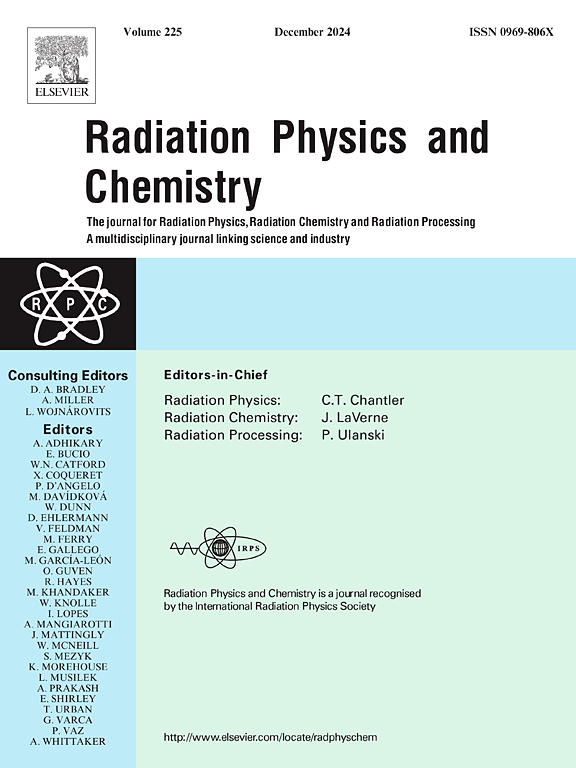Radiation driven synthesis of MnSe nanoparticles with dual luminescence and magnetic characteristics and its role in photocatalytic reactions
IF 2.8
3区 物理与天体物理
Q3 CHEMISTRY, PHYSICAL
引用次数: 0
Abstract
Many biomedical applications can greatly benefit from the combination of photoluminescence and magnetic properties of non-toxic manganese-based nanomaterials and thus, it demands for synthesizing such materials in an aqueous environment. The present work reports aqueous synthesis of starch-capped manganese selenide (MnSe) nanoparticles (NPs) through a steady-state gamma irradiation route under ambient pressure and room temperature. As radiolysis is considered as the cleanest method among available chemical approaches, we preferred to employ this technique and endeavored to establish optimal conditions of such synthesis. The as-produced MnSe nanocrystals demonstrated strong photoluminescence with a quantum yield of ca. 32% and co-existence of paramagnetic with antiferromagnetic behavior. To look into possible light-induced reactions with aromatic molecules, the effectiveness of synthesized particles on photo-induced degradation of dyes of similar structure was investigated. The proposed strategy may pave the way for synthesizing magneto-fluorescent nanoparticles in aqueous medium, which may find immense scope in nano-photonics and nano-biotechnology including biological assays, labelling and imaging.
辐射驱动合成具有发光和磁性双重特性的 MnSe 纳米粒子及其在光催化反应中的作用
无毒锰基纳米材料兼具光致发光和磁性的特性,许多生物医学应用都能从中受益匪浅,因此需要在水环境中合成此类材料。本研究报告了在环境压力和室温条件下,通过稳态伽马辐照路线,在水环境中合成淀粉封端的硒化锰(MnSe)纳米粒子(NPs)。由于辐射分解被认为是现有化学方法中最清洁的方法,因此我们倾向于采用这种技术,并努力建立这种合成的最佳条件。所制备的锰硒纳米晶体显示出强烈的光致发光,量子产率约为 32%,并且顺磁性与反铁磁性行为并存。为了研究光诱导与芳香族分子发生反应的可能性,研究人员还调查了合成颗粒对类似结构染料的光诱导降解效果。所提出的策略可能会为在水介质中合成磁荧光纳米粒子铺平道路,这可能会在纳米光子学和纳米生物技术(包括生物检测、标记和成像)中找到巨大的应用空间。
本文章由计算机程序翻译,如有差异,请以英文原文为准。
求助全文
约1分钟内获得全文
求助全文
来源期刊

Radiation Physics and Chemistry
化学-核科学技术
CiteScore
5.60
自引率
17.20%
发文量
574
审稿时长
12 weeks
期刊介绍:
Radiation Physics and Chemistry is a multidisciplinary journal that provides a medium for publication of substantial and original papers, reviews, and short communications which focus on research and developments involving ionizing radiation in radiation physics, radiation chemistry and radiation processing.
The journal aims to publish papers with significance to an international audience, containing substantial novelty and scientific impact. The Editors reserve the rights to reject, with or without external review, papers that do not meet these criteria. This could include papers that are very similar to previous publications, only with changed target substrates, employed materials, analyzed sites and experimental methods, report results without presenting new insights and/or hypothesis testing, or do not focus on the radiation effects.
 求助内容:
求助内容: 应助结果提醒方式:
应助结果提醒方式:


